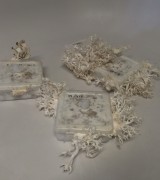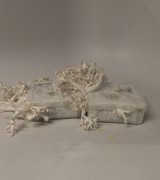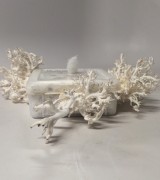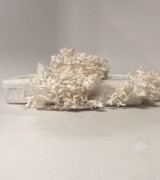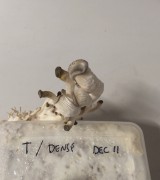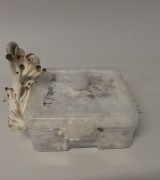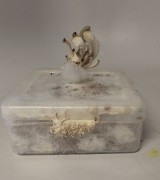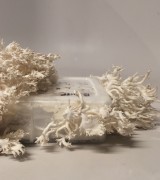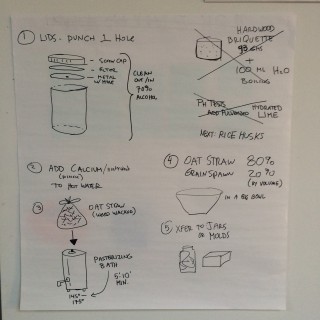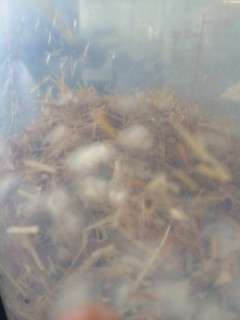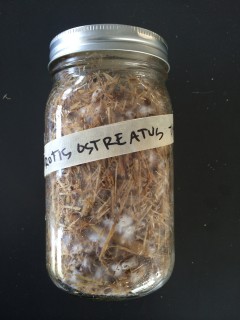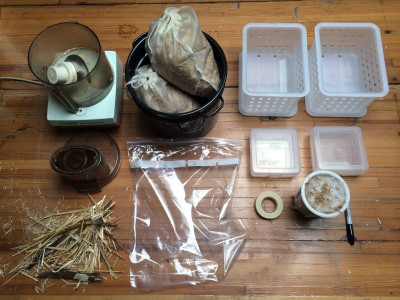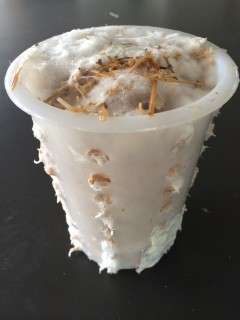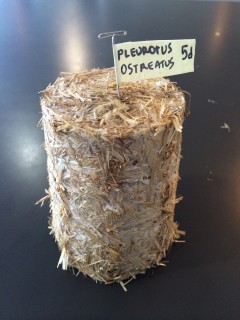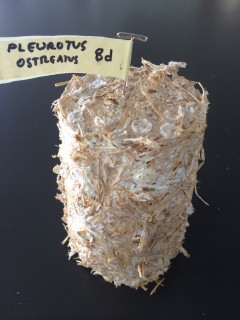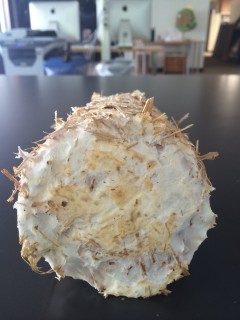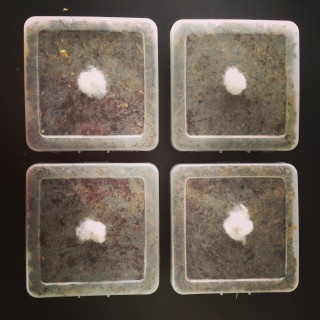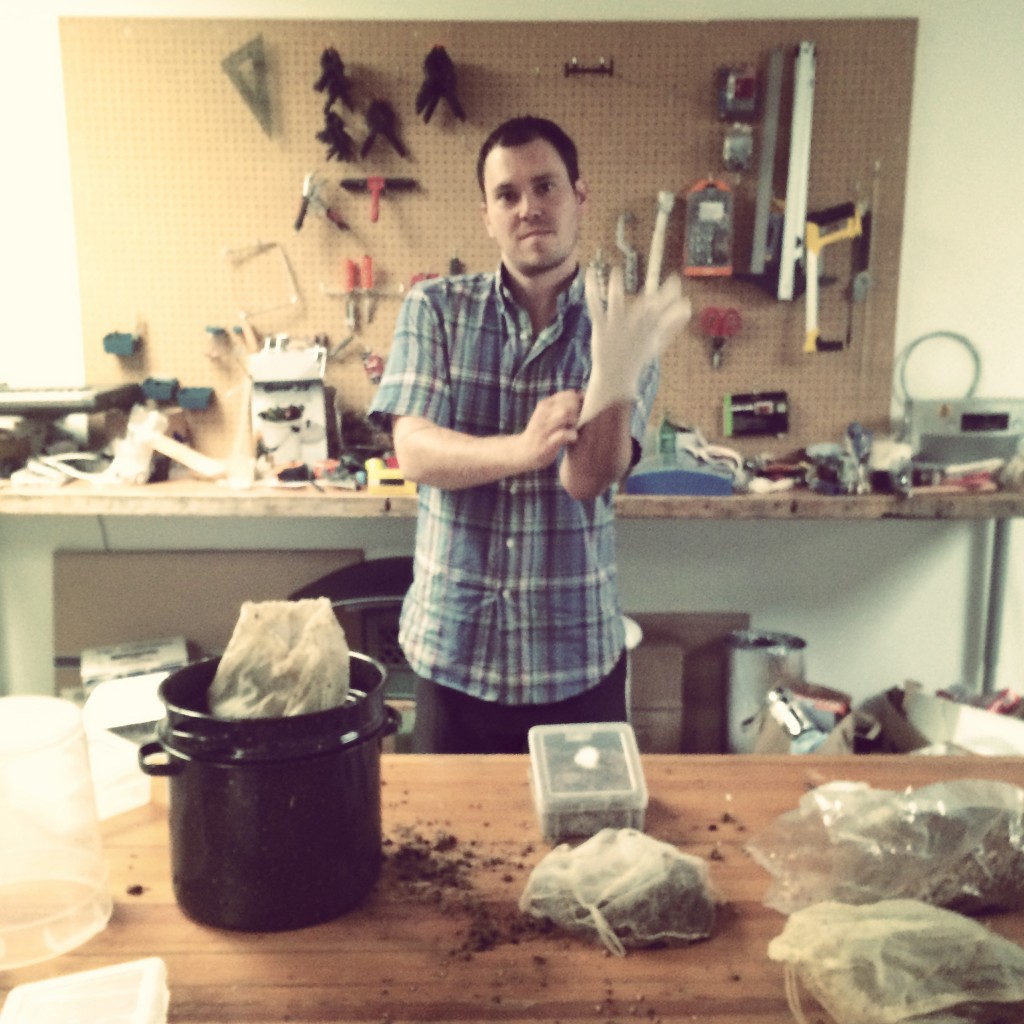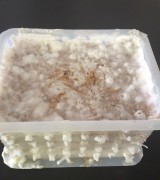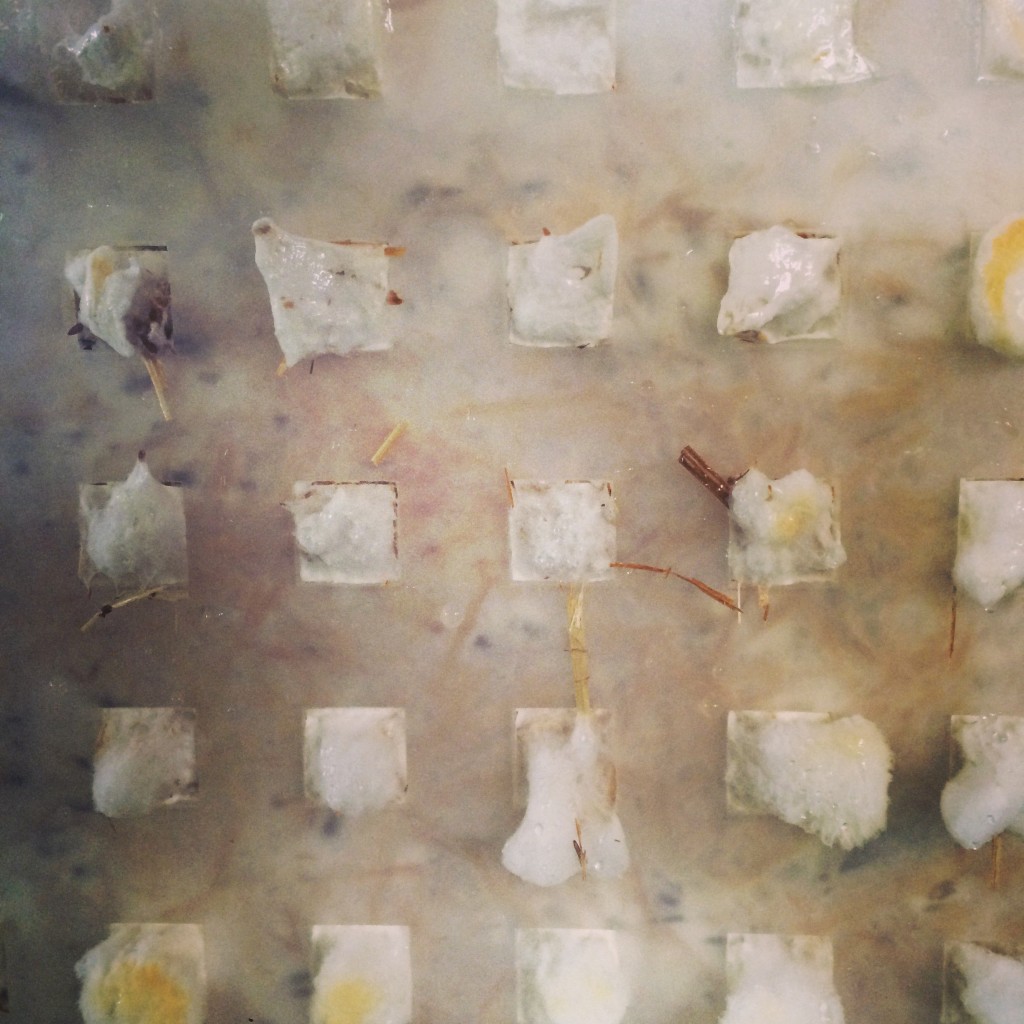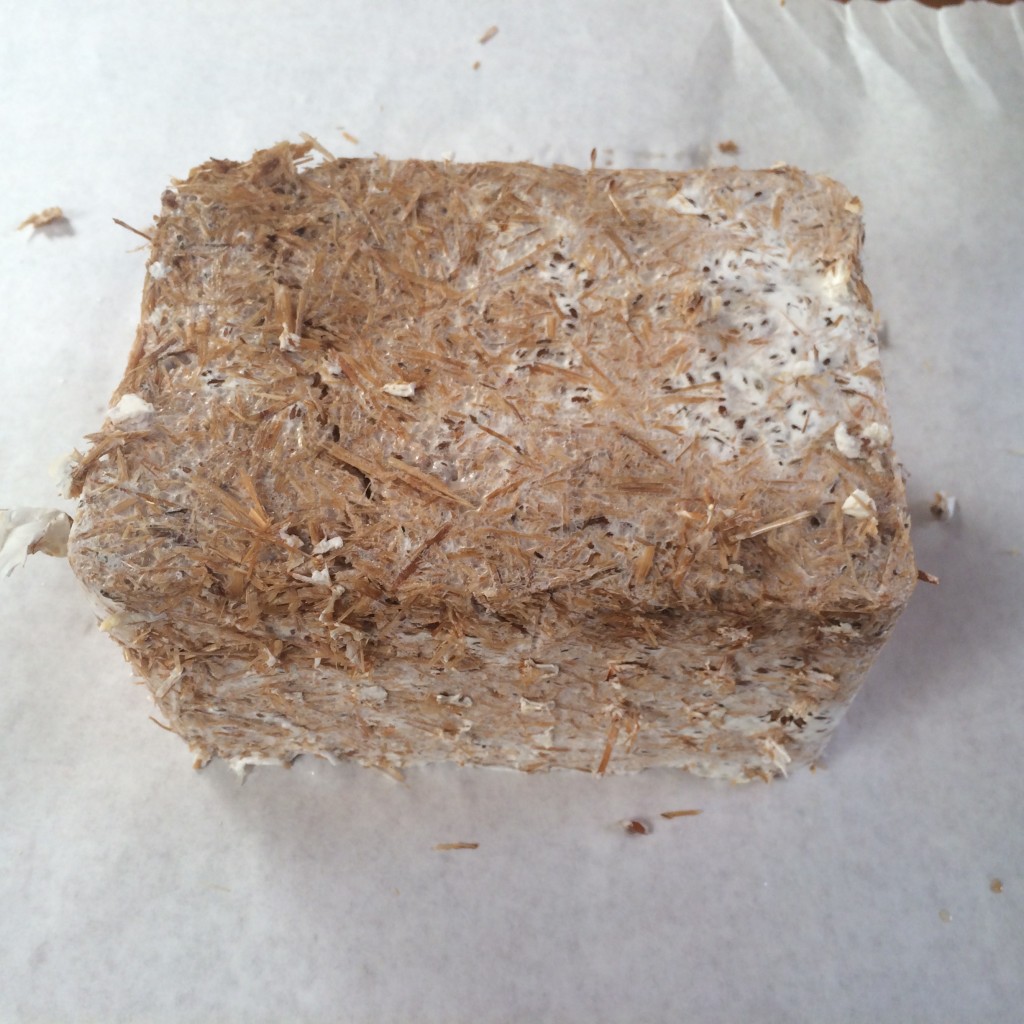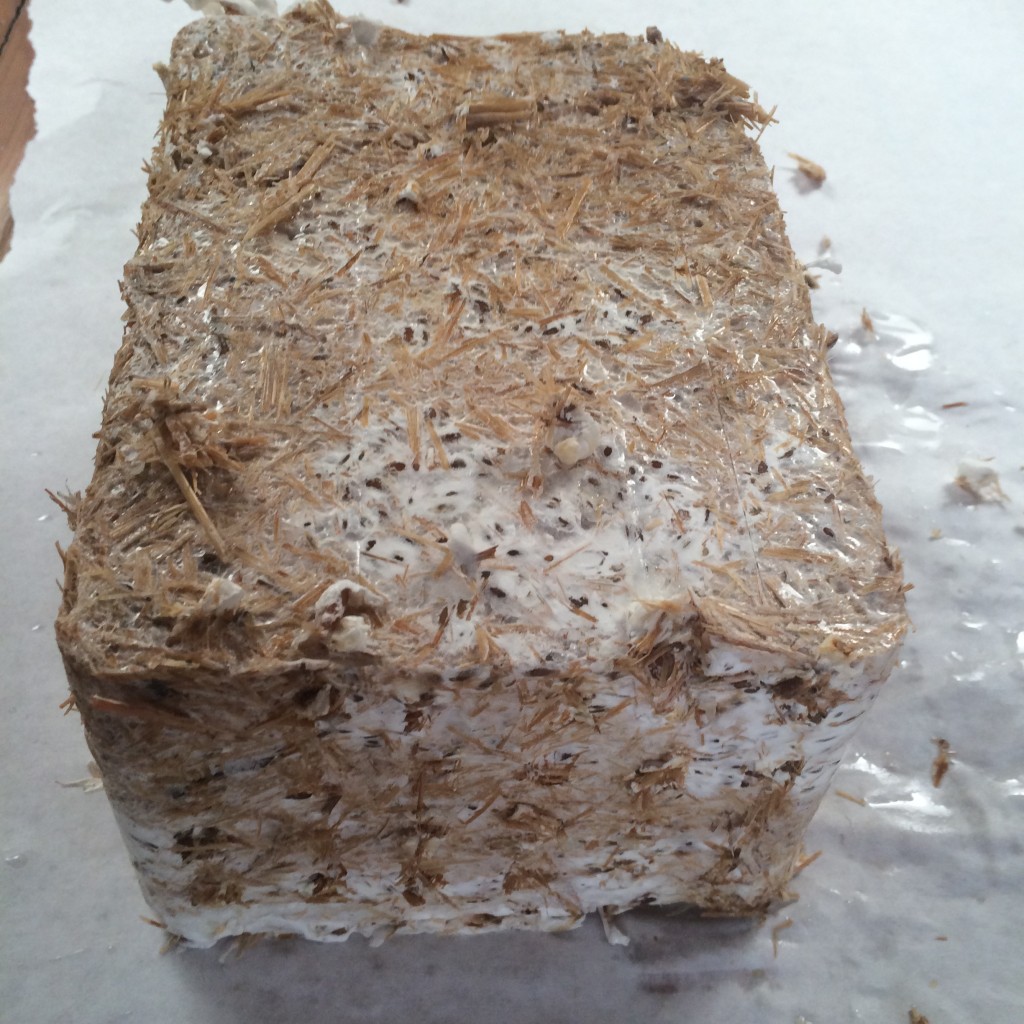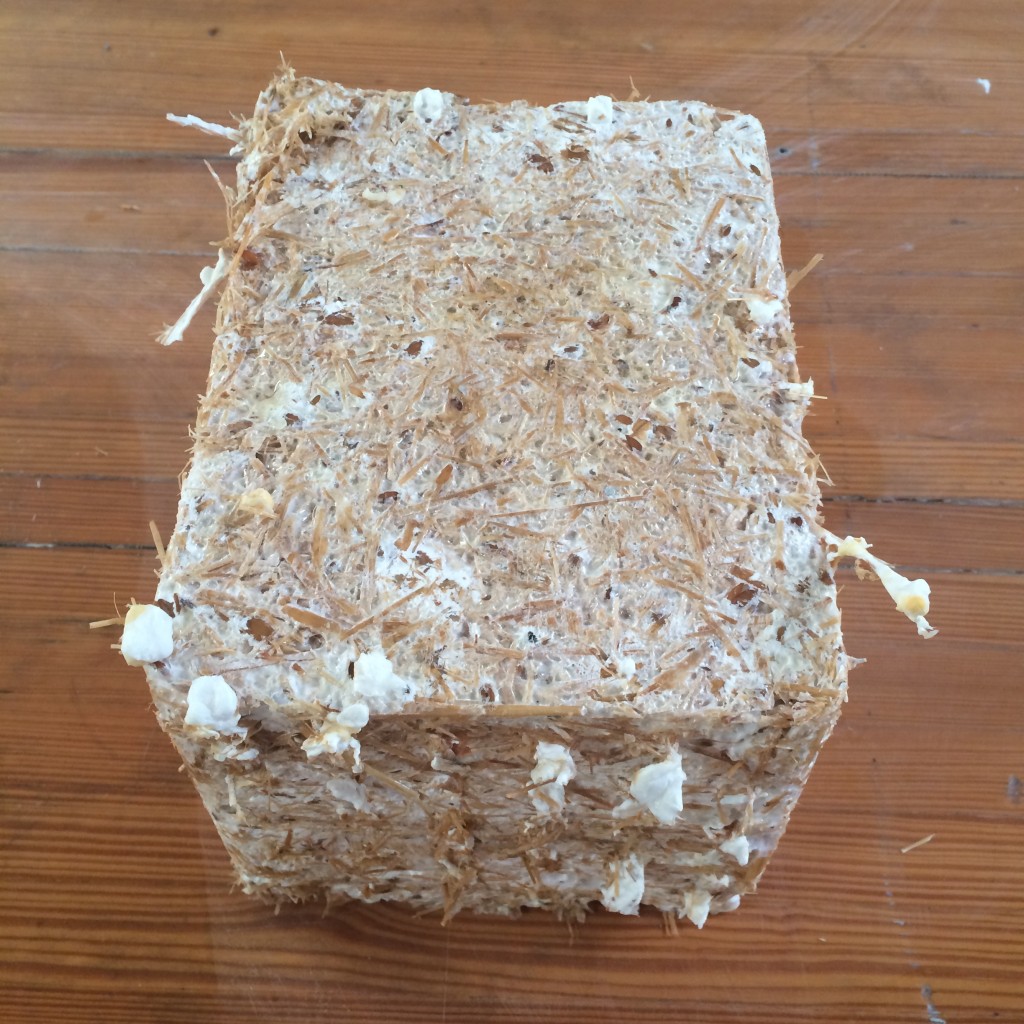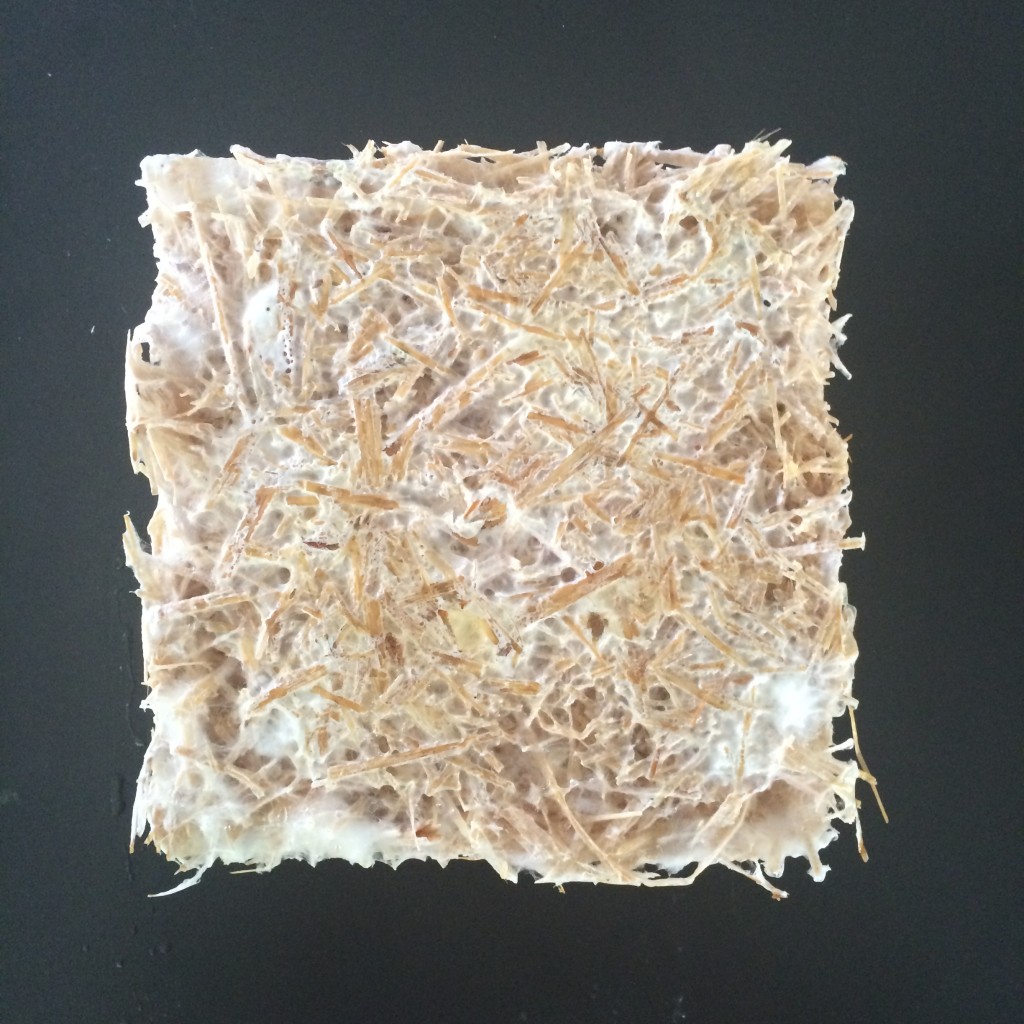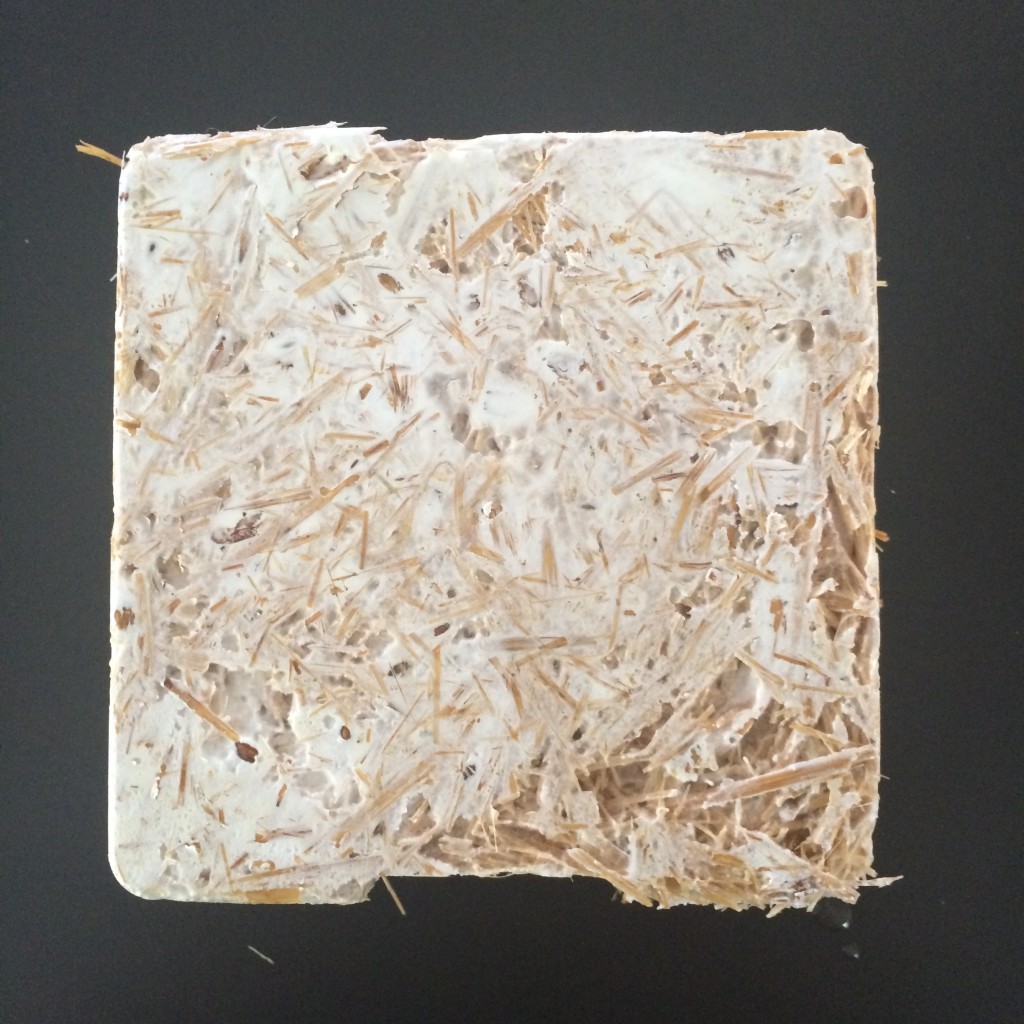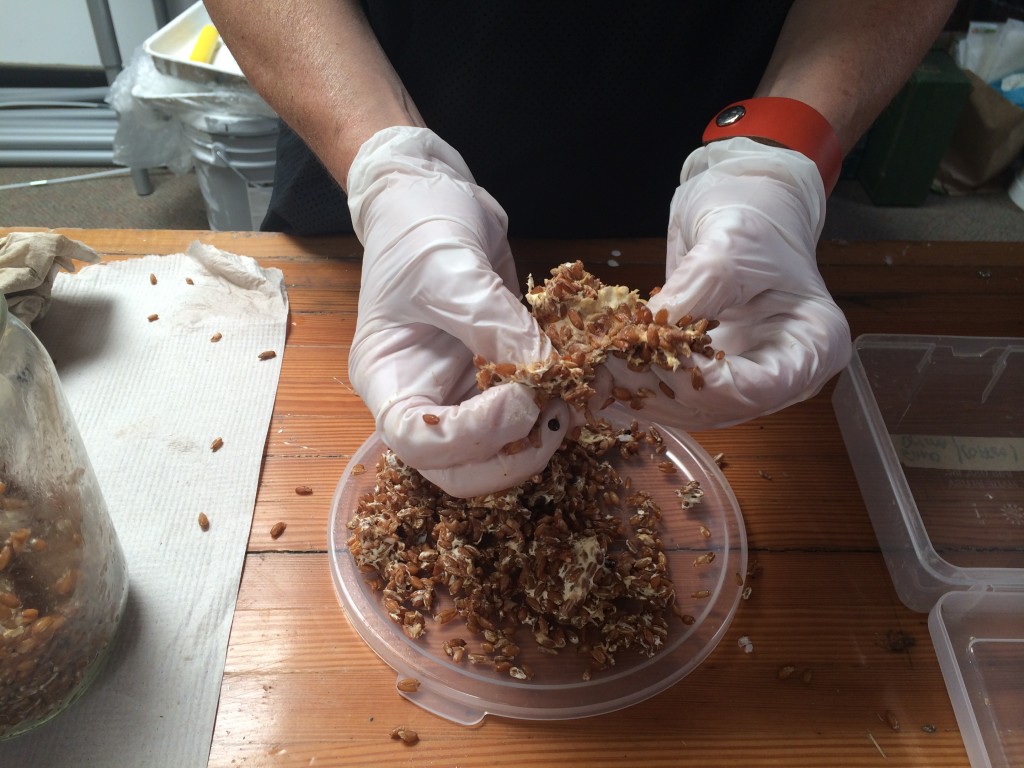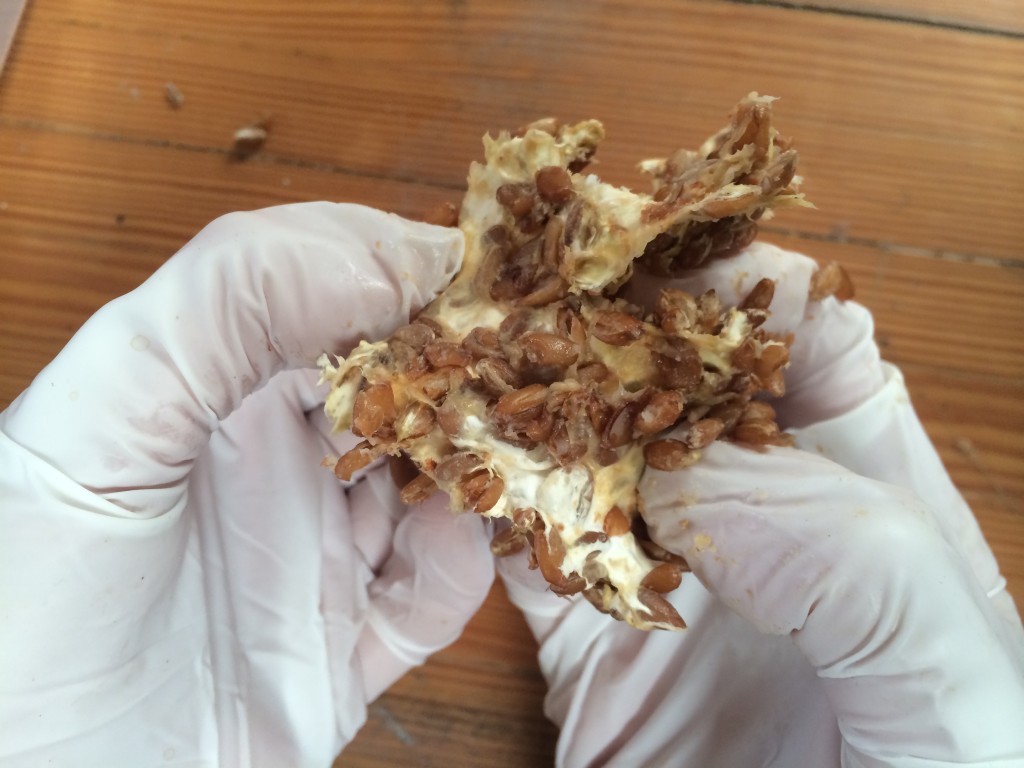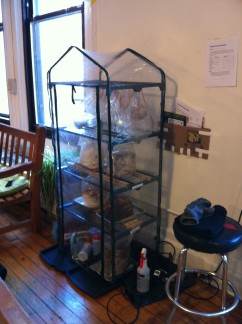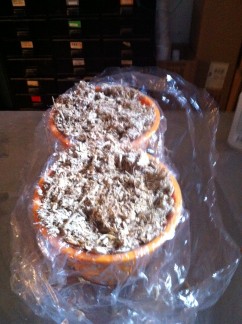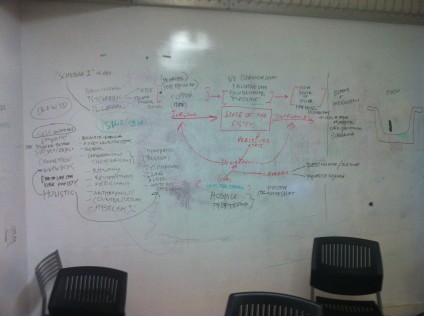Supplies:
grain spawn (many are fast growing; Pleurotus (oyster muchroom) is probably the fastest species, and is hardy, in terms of resistance to competition, but it will depend on the density you desire). You can purchase from mycosense, fungi.com, etc. I recommend mycosense because they are a small attentive company, and they are really into this process and work.
100 cup coffeemaker with a thermometer is convenient
but a large canning pot on a stove would do
nut bags (or other mesh bags) to pasteurize substrate (easy to squeeze water out)
a press to squeeze substrate would be nice, esp if you are making a lot of it
substrate: coffee chaff, oat straw, rice husks – depends on texture you want
molds to form substrate (I’ve been making test bricks in hinged polyethylene containers)
will need to provide an air hole
polyfill or cotton bags to make an air filter fo the hole – keep contaminants out
zip locks (if you are using a very porous mold (i like perforated molds for texture) you will want to place porous mold in a zip lock to keep moisture in
freezer tape and sharpie to label molds
spray bottle with 70% alcohol (should be 70% – you don’t want to kill everything)
paper towels or alcohol wipes
vinyl disposable gloves
Steps:
heat water to 160º
pasteurize substrate for 10-15 minutes
clean all work surfaces and mold interior and exterior with alcohol and dry
wash hands and arms with soap, wear gloves for the next steps:
cool substrate until you can handle it
squeeze all excess water from substrate (you want it moist but not dripping at all)
put air filter into hole in mold
mix grain spawn with substrate; there are 2 ways to do this:
“lasagna” method of layering substrate then spawn, or
premix 1:5 spawn:substrate
either way, the ratio is about 20%, might be less needed
pack mold with spawn
keep somewhere between 70º – 80º
(I keep my molds in a loosely closed cardboard box to prevent contaminants drifting in the air or falling from the ceiling)
You should have a pretty solid material after 6-12 days
It will look very white and fuzzy
Remove from mold
Dry in open air (it should no longer risk contamination at this point) for 3 days or until dry to touch
Bake in over at 150• – 200º for 60 minutes to render mycelium inert.

